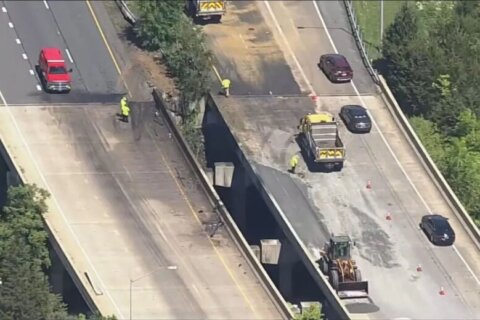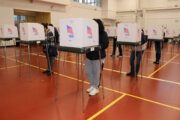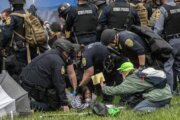WASHINGTON — Droves of travelers will be passing through the Washington area this weekend, traditionally the first holiday getaway of the year. As torrents of traffic circulate through the road network, congestion will form and many drivers will opt to use a road less traveled.
Lon Anderson with AAA Mid-Atlantic says roughly 900,000 locals will head out of town this weekend.
“That’s about a 4-and-a-half percent increase over last year and that increase is the largest increase we’ve seen in about 10 years. We’re projecting that in the Washington Metropolitan Area, almost 90 percent of those 900,000 people are going to be driving.”
Wise to traffic delays on the Friday before Memorial Day, many drivers have adjusted their schedules and will be departing on Thursday this year. Research conducted by the National Capital Region Transportation Planning Board shows the average driving speed during the pre-holiday week dipped to its lowest point between 5 and 6 p.m. on Thursday afternoon throughout the last five years.
Avoiding peak travel periods is an advantageous strategy for those drivers who are flexible.
“Leaving earlier or leaving late rather than in typical drive-times is probably going to help you a little bit.”
Drivers should be on guard for different traffic patterns late this week. Thursday will likely feature an early afternoon rush hour with delays on many routes developing by noon. The Friday morning rush hour will be lighter than normal. Like Thursday, traffic volumes will quickly increase by midday Friday.
“You have that mix of a lot of people doing weekend shopping, a lot of people just trying to get home from work — leaving a little early — and then you’ve got the people trying to get out of town,” Anderson says.
The best times to travel are before 10 a.m. and after 8 p.m. but delays on some routes, such as Interstate 95 and Route 50 near the Bay Bridge, are possible outside of this window.
Alternates and workarounds
A popular alternative to I-95 is Route 1, especially in Northern Virginia. More often than not, Route 1 will become clogged with bailout traffic soon after delays form on I-95. Volume delays incurred on Route 1 are often worse during peak travel times. The biggest choke points are at the signals in the town of Dumfries, Route 610 in Aquia Harbor, Route 630 in Stafford and Route 17 in Falmouth.
When maneuvering around congested thoroughfares, the widest work-arounds tend to work best but no alternate route is fool-proof.
Instead of I-95, some drivers opt with Route 29 (Lee Highway) through Warrenton to Route 17 between Opal and Falmouth. This trick doesn’t always pay off for southbound drivers. Long backups have been reported on Route 17 toward I-95 through a long-term work zone. Delays are also known to form on Route 29 at a pesky traffic signal located at the southern end of the Warrenton Bypass.
In Maryland, traffic delays are known to form early on Route 301 in Brandywine and La Plata during getaways. At the end of a holiday weekend, northbound traffic on Route 301 will typically back up in King George County, Virginia a few hours after delays form on I-95 in Spotsylvania County.
Portions of I-95 in northeastern Maryland and the Jersey Turnpike are known for recurring delays, especially on holiday weekends. For drivers with destinations in the Northeast, Route 15 through Frederick County, Maryland is a reliable alternative to I-95. Although this “end-run” involves driving a longer distance, traffic often moves well as far north as I-81 in Harrisburg, Pennsylvania and is far removed from the stop-and-go between Baltimore and Trenton.
Beach-bound traffic on Route 50 will likely slow at the Severn River Bridge and Bay Bridge by early afternoon. Due to rain showers Thursday afternoon, major eastbound delays are likely. Luckily, fair weather is expected on Friday which will allow crews at the Bay Bridge to keep three lanes open to eastbound traffic.
Last Sunday, home-bound delays on Route 50 were as long as they have been so far this year. Traffic was backed up for over six miles toward the Route 404 intersection by noon. Delays persisted for westbound traffic on the Eastern Shore until late evening.
For Washingtonians, there are no good alternatives to Route 50. Only during extreme circumstances, such as a major accident, should locals consider going around the Chesapeake Bay on I-95 to Delaware or I-64 and Route 13 to Hampton Roads.
The Maryland Transportation Authority expects more than 360,500 vehicles to drive across the Bay Bridge this weekend. The agency says the best times to drive toward the bridge before and after holiday weekends are before 10 a.m. and after 10 p.m.







